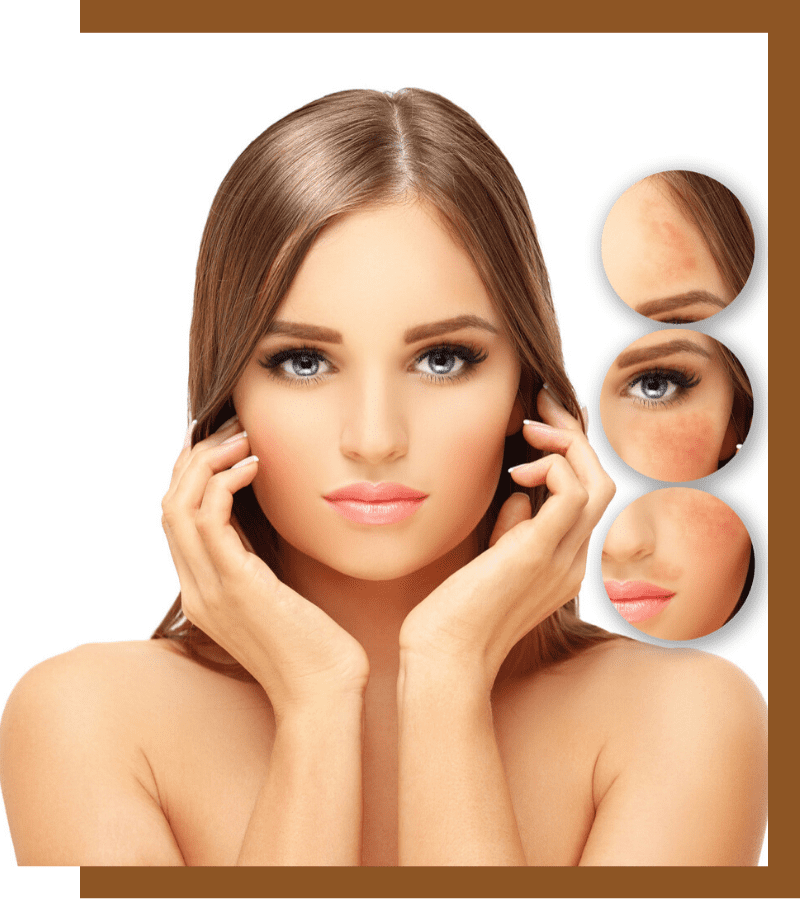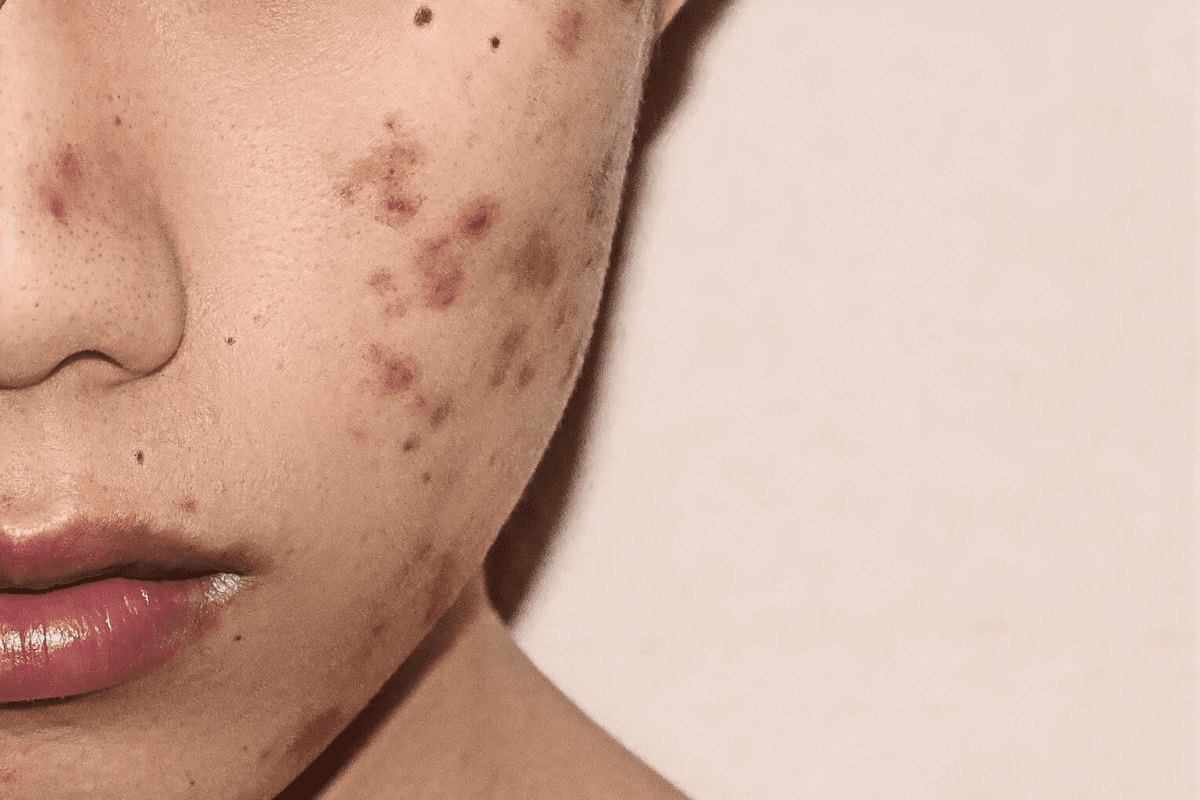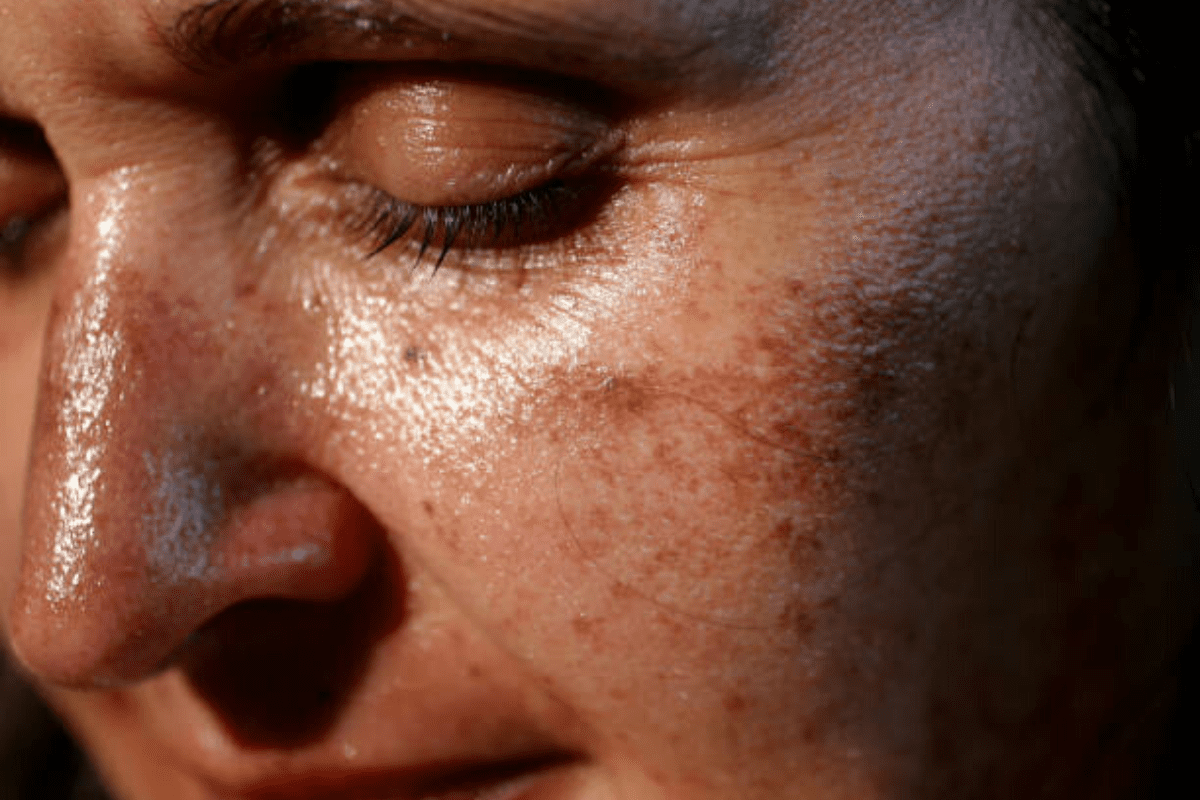- Unprotected exposure to sunlight
- Inflammation of skin
- Medical condition
- Melasma

What is pigmentation?
Pigmentation or hyperpigmentation is darkening of the skin in certain or all areas of the skin that appear unsightly. These may be in patches and appear darker than your normal skin colour. This results due to excess melanin or skin pigment deposition.
What are the causes of pigmentation?
There are different causes for different types of hyperpigmentation. These include
How to treat hyperpigmentation?
Hyperpigmentation treatment differs for various skin types and severity of the condition on your skin. Some of the treatments include
Topical creams
Creams containing certain ingredients like hydroquinone, licorice, etc.
Chemical peel
Plant based organic solutions are administered on your skin in clinical conditions.
Laser Therapy
Controlled beams of laser light are passed on the affected areas of the skin that result in destruction of damaged areas.
Microdermabrasion
Microdermabrasion is used to treat superficial pigmentation that affects only the uppermost epidermis layer of the skin.
What are the common types of pigmentation or hyperpigmentation?
Common types of pigmentation are as below.

Age spots
These are also known as sun spots, liver spots and solar lentigens. They are of varied sizes and appear as dark areas on the skin. They are more commonly seen on face, shoulder, hand especially around arms. These largely occur on the areas more exposed to direct sunlight. They are generally harmless and non-cancerous. They affect people of all ages but are more commonly seen in age 50 and above. They occur as flat, or oval areas of pigmentation, usually brown or tan in colour.
Melasma
These are also known as chloasma or mask of pregnancy when they occur in a pregnant woman. These are larger than age spots and occur on the facial skin. This is more common in women as brown patches appearing in the areas of cheek, forehead, chin, and nose-bridge. These are harmless but cause embarrassment due to their unsightly appearance. People with dark skin and unprotected exposure to sunlight are more prone to melasma.


Post-inflammatory hyperpigmentation
This is a kind of temporary discoloration of skin left by a trauma or skin injury. These can be formed due to external damage to the epidermal or outer layer of the skin. These are light brown to black in colour.
What triggers or worsens hyperpigmentation?
- Age Spots affects face and hands
- Melasma affects face
- Post-inflammatory affects face and neck, any other body part
- Age spots – Brown or black spots
- Melasma – Large patch of dark skin
- Post-inflammatory – Spots or patches that are brown and black in colour
Why Dermiq for pigmentation and hyperpigmentation?
Dermiq brings world-class treatments and expert dermatologists to help treat pigmentation on your skin. Our treatments are guided by stringent protocols and we follow highest levels of hygiene and care for our clients. We bring best pigmentation treatments at affordable prices in your city.










